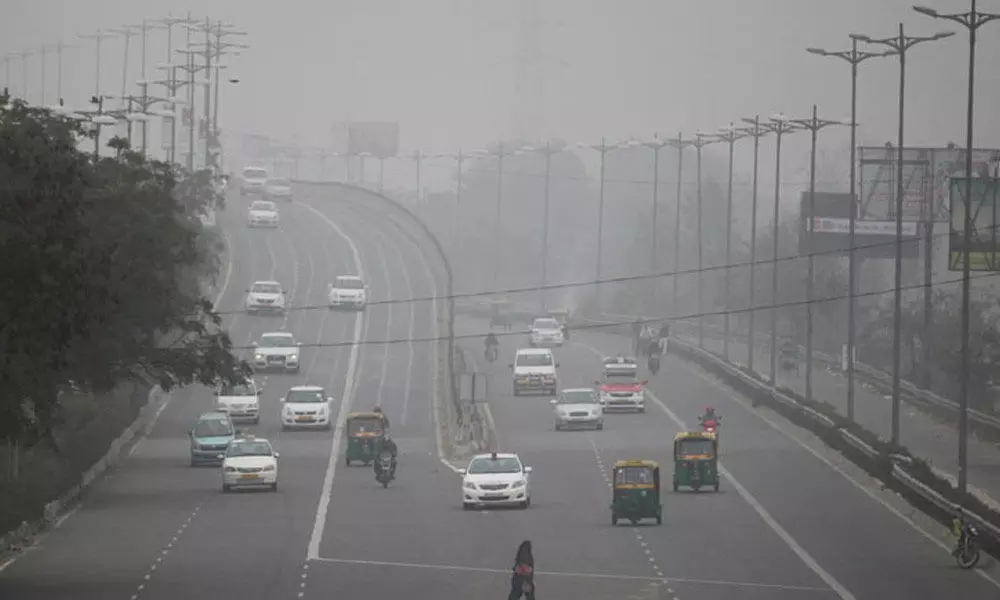Delhi bans diesel gen-sets as GRAP kicks in; air quality very poor in several parts

The national capital banned generator sets, barring those being used in essential and emergency services, on Tuesday, as the air quality in several places in the city and adjoining areas slipped to "very poor" level.
New Delhi: The national capital banned generator sets, barring those being used in essential and emergency services, on Tuesday, as the air quality in several places in the city and adjoining areas slipped to "very poor" level. The overall Air Quality Index in Dwarka Sector 8, Delhi Technological University, Mundka, Rohini, Anand Vihar, and Bawana was 359, 343, 342, 319, 313, and 307. The overall AQI stood at 275 at 6.30 pm. The air quality in neighbouring Ghaziabad (316), Greater Noida (308) and Loni Dehat (307) also dipped to "very poor" level.
An AQI between 0 and 50 is considered 'good', 51 and 100 'satisfactory', 101 and 200 'moderate', 201 and 300 'poor', 301 and 400 'very poor', and 401 and 500 'severe'. The ban on generators is a part of the Graded Response Action Plan (GRAP), a set of stricter anti-pollution measures to be taken according to the severity of pollution, that came into force on Tuesday. This is the first time that the ban on gen-sets has been extended to NCR cities of Gurgaon, Ghaziabad, Noida, Greater Noida, Faridabad, Sonepat, Panipat and Bahadurgarh.
The Centre-run System of Air Quality and Weather Forecasting And Research (SAFAR), in a report, said, "Delhi's overall air quality is in the higher end of the 'poor' category. It touched the 'very poor' category for a brief period on Monday night." "Surface winds are slow and variable and the wind direction at the surface and transport height is south-southwesterly, which is not quite favourable for efficient transport of fire plumes towards Delhi. In this condition, drastic deterioration of air quality is not expected over the next two days," the report said.
The city's air quality index will fluctuate between the higher end of the "poor" category and the lower end of the "very poor" category, it predicted. The India Meteorological Department said the city's air quality is likely to improve due to changing weather conditions. "A fresh Western Disturbance is likely to impact the Western Himalayan region from October 18. It is likely to enhance the wind speed which will help disperse pollutants," said Kuldeep Srivastava, a senior scientist at IMD. SAFAR said stubble burning incidents in Haryana, Panjab, and nearby border regions have shown an increasing trend over the last 24 hours.
Data available on SAFAR's website showed the share of stubble burning in the PM 2.5 concentration in Delhi was 5 per pent on Tuesday. It is predicted to increase to 6 per cent on Wednesday. Meanwhile, the Delhi government wrote a letter to Union Earth Sciences Minister urging him to share SAFAR's technical expertise so that the city administration can take immediate corrective measures to curb air pollution. In the letter to Harsh Vardhan, Delhi's Environment Minister Kailash Gehlot stressed that stubble burning in Delhi's neighbouring states during November has "always contributed significantly to higher PM2.5 levels in Delhi".
The assertion came a day after the Supreme Court-mandated Environment Pollution (Prevention and Control) Authority said that local sources of pollution in Delhi, Uttar Pradesh and Haryana are the primary reasons for poor air quality that plagues the national capital every winter. The Delhi government also shared NASA satellite images that showed "large scale stubble burning" in adjoining states of Delhi.















